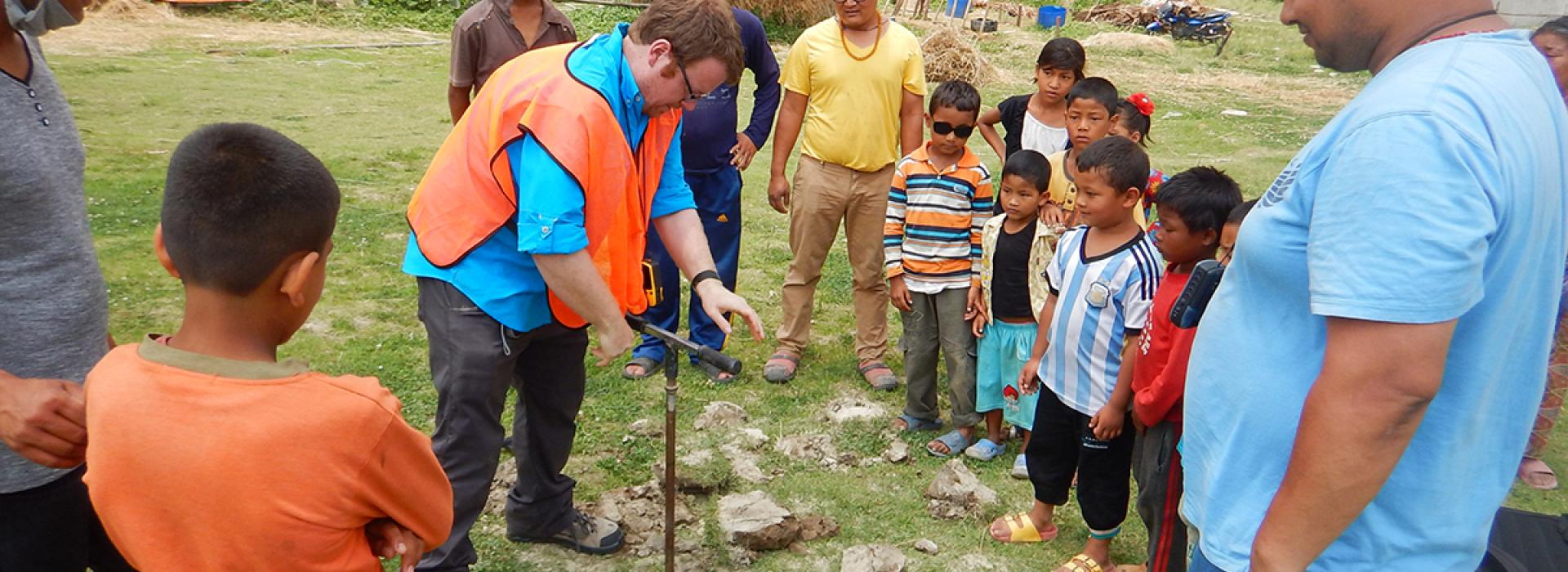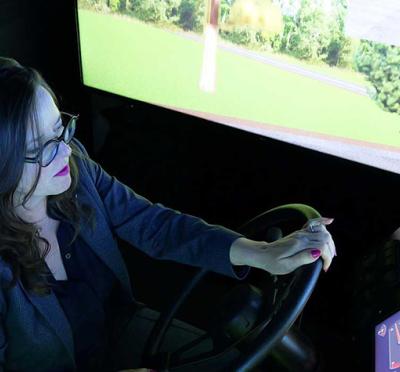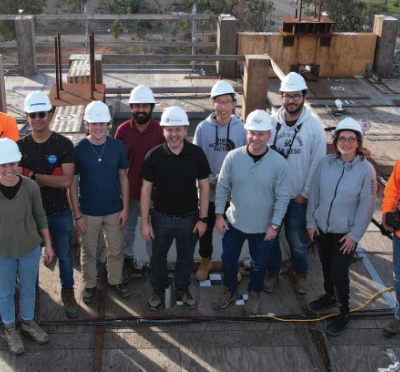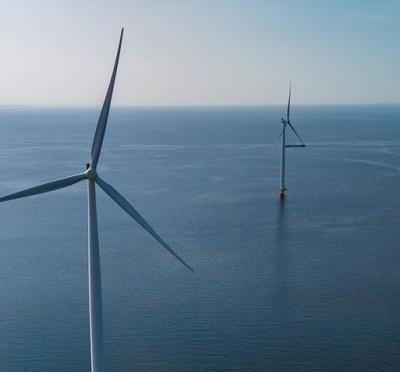Oregon State Civil and Construction Engineering (CCE) assistant professor Ben Mason was in Nepal last week for the second of two recent trips as part of an effort to collect data following the devastating earthquake that occurred on April 25, 2015.
The 7.8-magnitude earthquake, known as the Gorkha earthquake, was the worst natural disaster for the region in more than 80 years.
During his first visit to Nepal in late May, Mason, along with CCE post-doctoral researcher Deepak Rayamajhi, and Eric Thompson of the United States Geological Survey, investigated liquefaction around the Kathmandu Valley. Liquefaction is a phenomenon in which saturated soil behaves like a liquid in response to a sudden event, such as an earthquake. The goal of the trip was to perform quick reconnaissance and develop a report outlining the initial liquefaction risks found in the Kathmandu Valley.
Mason has traveled to Nepal with the GEER Team, which is part of the Geotechnical Extreme Events Reconnaissance Association. The association coordinates National Science Foundation efforts to capture perishable data immediately following the occurrence of extreme events, such as the recent Nepal earthquake.
The goal of Mason’s second visit was to develop more complete case histories, establish valuable local contacts, and form seed ideas for future research and collaborations. Rayamajhi and Domniki Asimaki of Caltech assisted Mason. The team investigated ground failure, topographic effects, and basin effects. Ultimately, his research will help local efforts to prepare for similar events in the Pacific Northwest.
“There are many similarities between the types of expected earthquakes and the types of soil deposits and geologic formations in Nepal and Oregon,” states Mason, “so this earthquake is a particularly important learning opportunity for increasing the seismic resiliency of Oregon.”
Mason’s methodology included using a hand auger to manually and visually classify soil, trenching with excavators to understand the effect of soil stratification on ground failure, using vane shear devices to determine the undrained shear strength of fine-grained soil deposits, using seismometers to perform microtremor analyses, and interviewing people to understand what occurred during the earthquake.
Thanks to the support of the College of Engineering and the GEER Team, Mason and his research team are able to advance understanding of the related effects of large earthquakes and foster connections that can benefit regions of high seismic hazard around the world.




